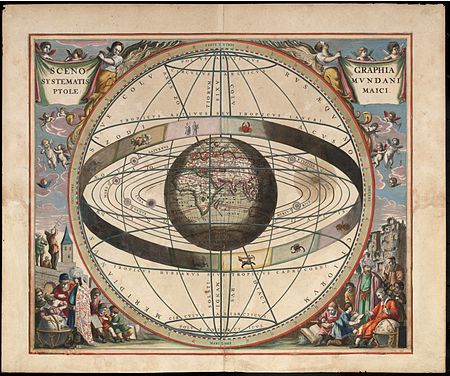Zodiac

The term zodiac is usually used to refer to a division of the Ecliptic into segments that are thought to be endowed with certain qualities and meanings in astrology.
Zodiac in Western Astrology
The term is most commonly used in western astrology to refer to the division of the ecliptic into twelve Signs.
History
The western zodiac was originally developed and standardized so that it consisted of 12 segments consisting of 30 degrees each by the 5th century BCE in Mesopotamia. It became widely adopted by other cultures in subsequent centuries after the development of horoscopic astrology.[2]
The band of twelve zodiac signs arrayed along the ecliptic along which the sun, moon and the other planets appear to circle around the earth.
Although the signs of the zodiac were named after the 12 principal star Constellations found along the ecliptic, they are not identical to them. The constellations vary in size whereas each sign of the zodiac is a 30 degree segment within the complete zodiac of 360 degrees. The switch from observing planets against the backdrop of constellations to locating planets within sectors of the heavens named for constellations seems to have taken place in Babylonian times.
The zodiac often is depicted as a set of symbols or graphic representations of each sign. For example, Aries is shown as a ram; and Taurus as a bull. The frequency of animal signs in the zodiac attests to the common Greek root in the word zodiac and the English words "zoo" and "zoology."
Periodically Opponents of Astrology point out that additional constellations touch on the ecliptic, notably the so-called Thirteenth Constellation, Ophiuchus. This does not change the nature of the 12 zodiacal signs, however. Ancient astronomers named and mapped out the neighboring constellations, so were completely aware of their existence.
Astrologers differentiate between the Tropical Zodiac and Sidereal Zodiac. The signs remain the same in these two systems, but the sidereal zodiac keeps pace with the gradually shifting position of stars from an earth-based perspective, and the tropical zodiac fixes the signs to the seasons and movement of the sun. Western astrology generally works with the former; and Indian Astrology with the latter.
See also
Weblinks
- Precession and Zodiac (Dieter Koch, 2002; Astrodienst)
- Wikipedia: Zodiac
- Heavenly Imprints: Development of the Zodiac (in Babylonia; Deborah Houlding 1997, 2003)
- For The Sidereal Zodiac (zodiac debate; Kenneth Dowser, 1997/ 2005)
- For The Tropical Zodiac (zodiac debate; David McCann, 1997/ 2005)
- Wikimedia Commons: Zodiac (many pictures)
Notes and References
- ↑ Illustration from Andreas Cellarius Harmonia Macrocosmica, 1660/61
- ↑ From The Astrology Dictionary of Chris Brennan